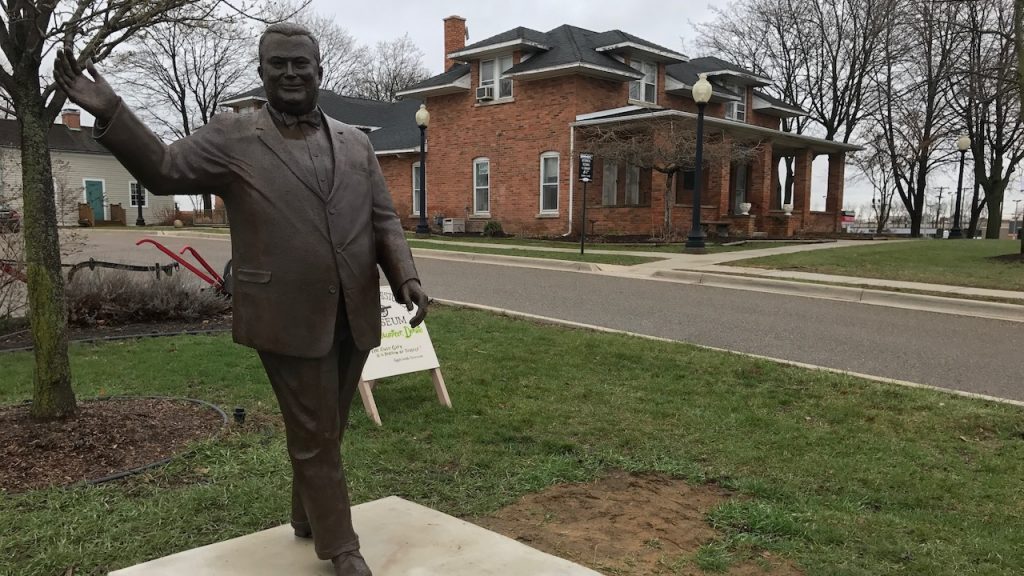The Racist, Segregationist History Behind Dearborn’s Orville Hubbard Statue
The statue of controversial former Mayor Orville Hubbard was removed in June, revealing a complex history of racism and segregation in Dearborn beyond Hubbard’s legacy.

For decades, statues of racist historical figures have towered over American cities and towns. Now, many of those statues are being torn down.
“Almost from the beginning of his tenure in the mid-40s [Hubbard] started playing the race card from a white standpoint.” — David Good, author
Just this week, protesters in Baltimore ripped down a marble statue of Christopher Columbus and tossed the pieces into the city’s Inner Harbor.
Many in Southeast Michigan are now reckoning with their own racist statues. In mid-June, Detroit’s Christopher Columbus statue was removed. Not long after that, a statue of Dearborn’s longtime Mayor Orville Hubbard was quickly removed from public display.
Listen: The Complicated Legacy of Dearborn’s Orville Hubbard Statue
Guests
David Good is the author of “Orvie: The Dictator of Dearborn,” a member of the Dearborn Historical Commission, and the former editor of The Dearborn Historian. He says that Hubbard was an unregenerate racist who enacted numerous city policies exacerbating segregation and racial tensions in Dearborn over the course of his 36 year tenure as mayor.
“The problem with Hubbard’s tenure and his legacy is almost from the beginning of his tenure in the mid-40s he started playing the race card from a white standpoint,” Good says. “[He was] the most unabashed segregationist in the North, you might say.”
Brian Stone is the English editor of the Yemeni American News and recently wrote a piece called “The Wild Story Behind Dearborn’s Vanished Hubbard Statue.” He says that while Hubbard’s policies reinforced segregation in Dearborn, some of those policies stem back to Ford Motor Co. founder Henry Ford’s time in the city.
“When we look at how Dearborn was changed, it essentially began when Henry Ford started to industrialize,” says Stone. “He had plans to re-make the city, and indeed he did.”
“In many ways the segregation of Dearborn and Inkster depended on Henry Ford,” he continues.
Stone says that Ford’s encouragement of Arab American immigration to Dearborn was also steeped in racism.
“Even though the Arab American is a victim of white supremacy, they at one time, in some ways, benefitted from white supremacy. The encouragement of immigration to Dearborn had a great deal to do with keeping African Americans out,” he says.
Stone says this sentiment carried forth into Hubbard’s tenure as Mayor of Dearborn.
“Orville Hubbard didn’t care about having Arab Americans [in Dearborn], because he recognized the hostility between Black people and Arabs,” Stone says.
This article was written by Detroit Today student producer Ali Audet.
Trusted, accurate, up-to-date
WDET is here to keep you informed on essential information, news and resources related to COVID-19.
This is a stressful, insecure time for many. So it’s more important than ever for you, our listeners and readers, who are able to donate to keep supporting WDET’s mission. Please make a gift today.
